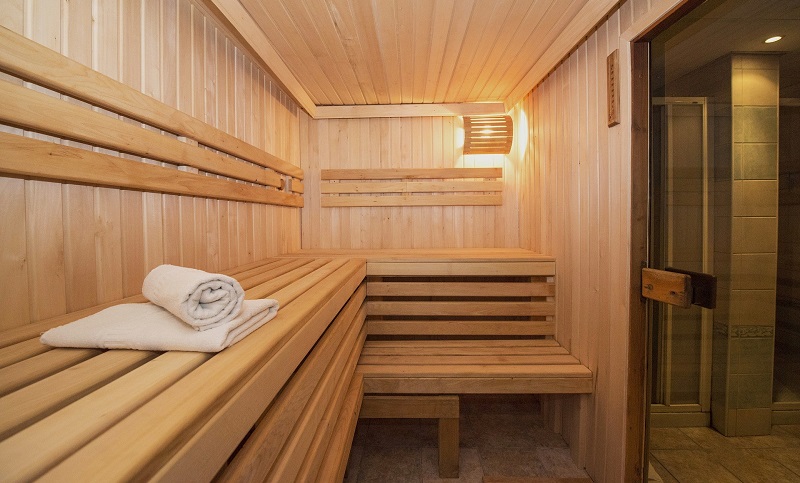After a long day at work or a hard workout, many of us enjoy relaxing in the heat of saunas and steam rooms. While they both consist of wood-lined, heated rooms, they operate on different principles and offer different health benefits. So how do you decide which treatment is best for you?

What Is A Sauna?
Saunas use dry heat provided by an electric, infrared or wood-fired stove. Users can increase humidity by pouring water onto heated rocks to create a small amount of steam. With temperatures typically up to 90°C, using a sauna has been likened to sitting in an oven. People often choose to use a sauna to soothe aching muscles and painful joints as well as to relax and de-stress.
Benefits Of Using A Sauna
Regular sauna users see improved cardiovascular health and lower blood pressure. Sitting in a sauna is the equivalent of walking steadily on a treadmill as it has the same effect of making your heart work harder. Studies have shown that using a sauna for 20 minutes every other day lowers the risk of stroke, heart attacks, and dementia. Heat therapy in a sauna also eases painful joints and sore muscles, as well as boosting energy and lifting your mood.
What Is A Steam Room?
Steam rooms are not heated to such high temperatures as saunas (usually up to 50-60°C) but offer up to 100% humidity. Because of the moisture in the atmosphere, you may experience the temperature as feeling hotter than in a sauna. The heat of a steam room offers the same health benefits as a sauna; it makes no difference whether the atmosphere is humid or dry. However, they do offer some extra advantages for people with respiratory conditions.
Benefits Of Using A Steam Room
A steam room, sometimes known as a Turkish bath, offers the same benefits as a sauna but with an added advantage for people suffering from asthma, allergies or other respiratory problems. The dry heat of a sauna can exacerbate these conditions, but the moist heat of a steam room hydrates the respiratory tract and helps to open out the lungs. The humidity also alleviates nasal congestion and expels toxins from your skin, leaving it hydrated, dewy and glowing.
Sensible Use
With both saunas and steam rooms, the main risk is dehydration, so make sure you drink plenty of water before and after use. Because of the extreme heat, pregnant women and people with heart conditions and epilepsy are advised to avoid saunas and steam rooms. If you’ve not used one before, start off slowly with a short session and gradually build up to 15 – 20 minutes.
Should You Invest In A Sauna Or Steam Room?
A home sauna or steam room makes an excellent complement to a home swimming pool or gym, or simply as a stand-alone luxury. Both require a similar investment and a similar amount of space, so what is the best choice for your home? If you have asthma or a respiratory condition, it’s advisable to choose a steam room, as the humid environment will be better for your lungs.
Other than that, the choice boils down to a matter of taste. If you enjoy a hard workout you may get more enjoyment out of a sauna. A sauna is best for relaxing the muscles and reducing blood pressure, while steam rooms are perhaps better for a total body detox.
Next Steps
Of course, many people enjoy the experience of both a sauna and a steam room – and if you’re lucky enough to have the space for both, they would make a unique contribution to your home! If you’d like to find out more about what’s involved in owning a sauna or steam room – including ongoing costs, installation requirements and lead time, please have a chat with one of our advisers today.

